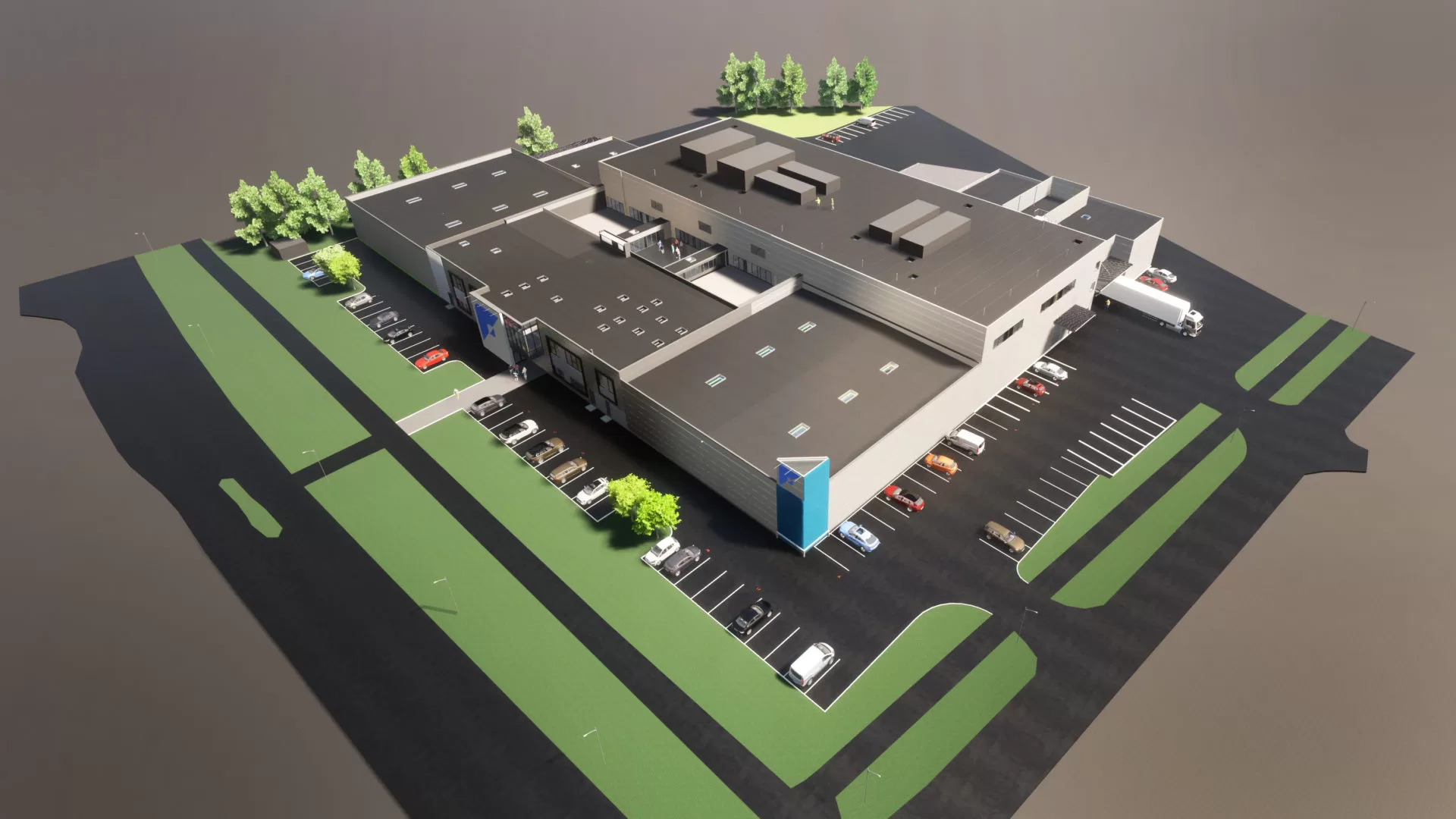
Pharmaceutical Design in Pakistan: Shaping the Future of Healthcare and Industry
Introduction
The pharmaceutical industry in Pakistan is experiencing unprecedented growth, fueled by increasing demand for medicines, vaccines, and research facilities. To meet this demand, businesses are investing in pharmaceutical design in Pakistan—a critical step toward building state-of-the-art facilities that comply with international standards, such as GMP, ISO, and WHO guidelines.
From cleanroom integration to sustainable building systems, pharmaceutical design combines innovation, functionality, and compliance to create efficient and future-ready facilities. Whether it’s a manufacturing plant or a research laboratory, professional pharmaceutical design services ensure that facilities meet the needs of today while staying adaptable for tomorrow.
What is Pharmaceutical Design?
Overview of Pharmaceutical Facility Design
Pharmaceutical design refers to the planning and construction of specialized facilities where medicines, vaccines, and biotech products are manufactured, tested, and stored. These facilities require precise environmental controls to minimize contamination risks and ensure product safety.
Importance of Compliance and Efficiency
Pharmaceutical facilities must adhere to global standards like GMP (Good Manufacturing Practices) and ISO 14644 for cleanrooms. Additionally, designs should optimize workflows, reduce operational costs, and enhance production efficiency.
Industries Relying on Pharmaceutical Design in Pakistan
Pharmaceutical Manufacturing
Modern designs focus on creating sterile environments for manufacturing, packaging, and quality control of medicines and vaccines.
Research and Development Facilities
Designs for R&D labs prioritize flexibility, precision, and compliance to support drug discovery and testing processes.
Biotechnology and Vaccine Production
Specialized facilities are required for complex processes such as cell culture, genetic engineering, and vaccine formulation.
Key Principles of Pharmaceutical Design
GMP Compliance and International Standards
Designs must meet the stringent requirements of GMP, ensuring that facilities consistently produce high-quality pharmaceutical products.
Optimized Workflows for Operational Efficiency
Layouts should minimize unnecessary movement of materials and personnel, reducing contamination risks and streamlining production.
Cleanroom Integration for Contamination Control
Cleanrooms are essential for sterile manufacturing. Seamless surfaces, advanced air filtration, and pressure control systems are integrated into the design.
Pharmaceutical Design Trends in Pakistan
Growth of the Pharmaceutical Industry in Pakistan
With over 800 pharmaceutical companies in Pakistan, the demand for professional facility design continues to rise. The industry’s focus on exports is driving the need for globally compliant designs.
Increasing Adoption of Modular and Sustainable Designs
Modular designs offer flexibility, while sustainability initiatives reduce energy consumption and environmental impact.
Cleanroom Design in Pharmaceutical Facilities
Importance of Cleanrooms for Sterile Environments
Cleanrooms control airborne particles, humidity, and temperature, creating a sterile environment essential for pharmaceutical production.
ISO 14644 Compliance for Cleanroom Standards
Adhering to ISO 14644 ensures that cleanrooms meet international cleanliness classifications, from ISO Class 1 to ISO Class 8.
Modular Cleanroom Systems for Flexibility
Modular cleanrooms can be easily expanded or reconfigured, making them ideal for evolving business needs.
HVAC and Environmental Control Systems
Advanced HVAC Systems for Temperature and Humidity Control
Precision HVAC systems regulate environmental factors, ensuring optimal conditions for production and storage.
HEPA and ULPA Filtration Systems
High-efficiency filters remove over 99.99% of airborne particles, ensuring compliance with ISO and GMP standards.
Airflow Management and Pressurization
Proper airflow and pressure differentials prevent cross-contamination between production areas.
Compliance and Standards for Pharmaceutical Design in Pakistan
ISO, GMP, WHO, and FDA Regulations
Pharmaceutical designs must meet international guidelines to ensure product safety and quality, especially for export markets.
Pakistan-Specific Regulatory Requirements
Facilities in Pakistan must also adhere to local building codes and environmental regulations.
Customized Pharmaceutical Design Solutions in Pakistan
Tailored Designs for Industry-Specific Needs
Designs can be customized for vaccine production, sterile manufacturing, or small-scale pharmaceutical labs.
Scalable and Modular Options for Future Expansion
Modular designs allow facilities to adapt and expand as business requirements evolve.
Challenges in Pharmaceutical Design in Pakistan
Adapting to Local Climate and Infrastructure
Designs must address challenges such as high temperatures, humidity, and limited infrastructure in some regions.
Balancing Cost with International Compliance Standards
Professional services optimize designs to meet international standards while minimizing costs.
Limited Availability of High-Quality Materials Locally
High-grade materials and components may need to be imported, increasing costs and timelines.
Sustainability in Pharmaceutical Design
Energy-Efficient Systems for Cost Reduction
Sustainable HVAC systems and LED lighting reduce operational costs and environmental impact.
Use of Eco-Friendly Construction Materials
Recyclable and low-VOC (volatile organic compound) materials contribute to greener designs.
Waste Management Systems for Pharmaceutical Facilities
Facilities are equipped with advanced waste disposal systems to handle hazardous materials safely.
Benefits of Professional Pharmaceutical Design Services
- Enhanced Compliance with Global Standards: Professional designs ensure adherence to GMP, ISO, and WHO guidelines.
- Improved Operational Efficiency: Streamlined layouts and workflows reduce bottlenecks and contamination risks.
- Long-Term Cost Savings Through Sustainable Systems: Energy-efficient systems lower operational costs over time.
Conclusion
Investing in professional pharmaceutical design in Pakistan is critical for businesses aiming to meet global standards, enhance operational efficiency, and remain competitive. With the pharmaceutical industry rapidly expanding, innovative and compliant facility designs are essential for ensuring success in both domestic and international markets.
From cleanroom integration to energy-efficient systems, professional pharmaceutical design services deliver tailored solutions that address industry challenges while paving the way for future growth.
FAQs
What are the key features of pharmaceutical design in Pakistan?
How does GMP compliance impact pharmaceutical facility design?
What role do cleanrooms play in pharmaceutical buildings?
What are the benefits of modular designs for pharmaceutical facilities?
How can pharmaceutical designs in Pakistan become more sustainable?
Why is professional pharmaceutical design essential for global compliance?
Inbound Link Suggestions:
- “Cleanroom Construction Services in Pakistan”
- “GMP Compliance for Pharmaceutical Manufacturing in Pakistan”
Outbound Link Suggestions:




